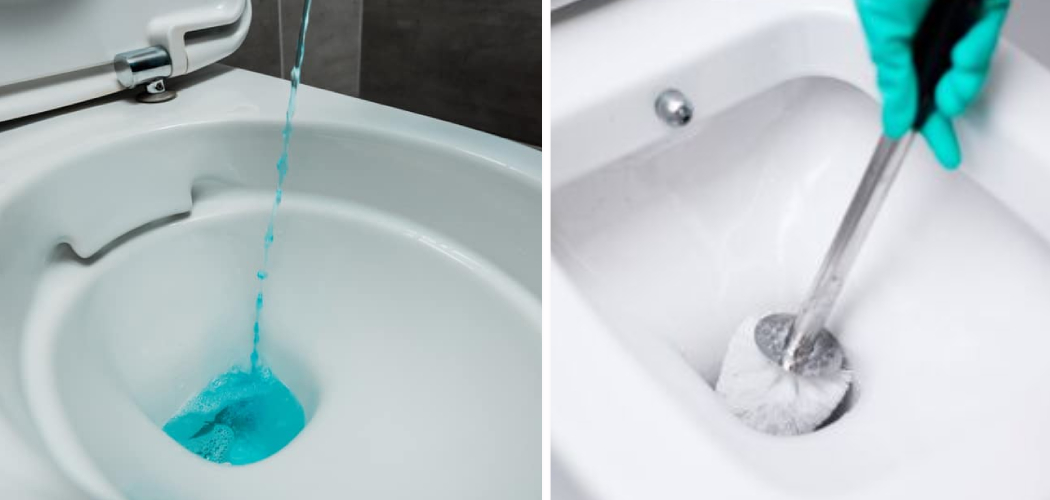Drain cleaners are a common household item that can keep pipes and drains clean. While they are typically used for unclogging kitchen or bathroom sinks, they can also be used in toilets. In this guide, we will provide step-by-step instructions on how to use drain cleaner in toilet.
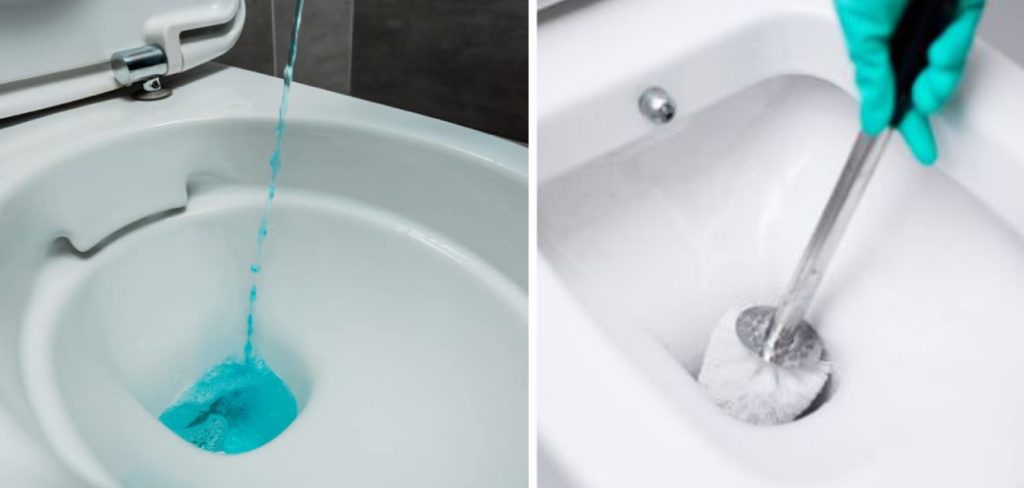
Before we dive into the specifics of using drain cleaners in a toilet, it’s important to understand the different types of available drain cleaners. There are two main types: chemical and enzymatic. Chemical drain cleaners contain harsh chemicals that work to dissolve and break down clogs, while enzymatic drain cleaners use bacteria and enzymes to naturally break down clogs. It’s important to choose the right type of drain cleaner that is suitable for your specific needs.
Understanding Drain Cleaners
Before using any drain cleaner, it’s important to understand the difference between chemical and enzymatic cleaners. As mentioned earlier, chemical drain cleaners use strong chemicals to break down clogs and clear out your pipes. However, these chemicals can be harmful if not used properly or if they come into contact with other substances.
On the other hand, enzymatic drain cleaners use natural bacteria and enzymes to break down clogs. They are generally less harsh and can be safer for households with young children or pets. However, they may take longer to work than chemical drain cleaners.
When choosing between the two types of drain cleaners, it’s important to consider the severity of the clog and any potential risks involved. It’s also a good idea to carefully read the instructions and warnings before using any drain cleaner.
Step-by-step Guidelines on How to Use Drain Cleaner in Toilet
Step 1: Prepare the Area
Before using any drain cleaner, make sure to protect yourself and your surroundings. Put on protective gloves and goggles to prevent any contact with your skin or eyes. Also, open a window or turn on a fan for ventilation, as chemical cleaners can release strong fumes. Preparing the area will help ensure your safety and make cleaning more efficient. If you have a toilet brush, it’s also a good idea to have it nearby for the next step.
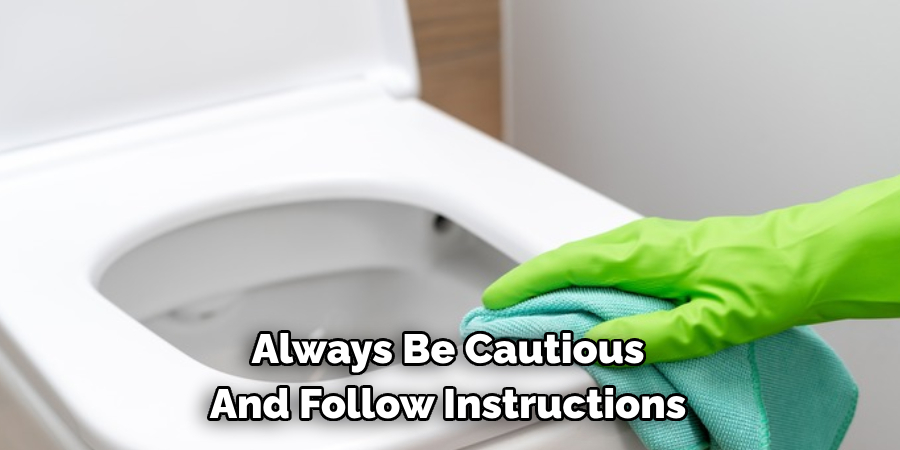
Step 2: Pour the Drain Cleaner into the Toilet Bowl
Carefully read the instructions for your chosen drain cleaner and measure the recommended amount. Slowly pour it into the toilet bowl, aiming for any visible clogs or problem areas. Be cautious not to splash the cleaner onto yourself or any other surfaces. This step may require patience, as the cleaner will need time to work magic. If using an enzymatic cleaner, you may need to wait overnight for it to fully break down the clog.
Step 3: Use a Toilet Brush
After giving the drain cleaner enough time to work, use a toilet brush to scrub and loosen any remaining debris. This will help the cleaner reach deeper into the pipes and clear out stubborn clogs. If you use an enzymatic cleaner, you can skip this step, as it will continue working even after the brush has been flushed. Using a brush can also help prevent future clogs by keeping the pipes and drains clean.
Step 4: Flush and Repeat if Necessary
Once you have thoroughly scrubbed the bowl with the toilet brush, flush the toilet to see if the clog has cleared. If not, you may need to repeat the process or try a different type of drain cleaner. Remember to always follow the instructions and use caution when handling any drain cleaner. Make sure to properly dispose of any leftover cleaner and wash your hands thoroughly.
Following these simple steps will help you effectively use drain cleaner in a toilet and keep your pipes and drains running smoothly. Always take precautions when handling any chemicals and choose the right type of drain cleaner for your specific needs. With these guidelines, you can say goodbye to clogged toilets and hello to a clean and functional bathroom.
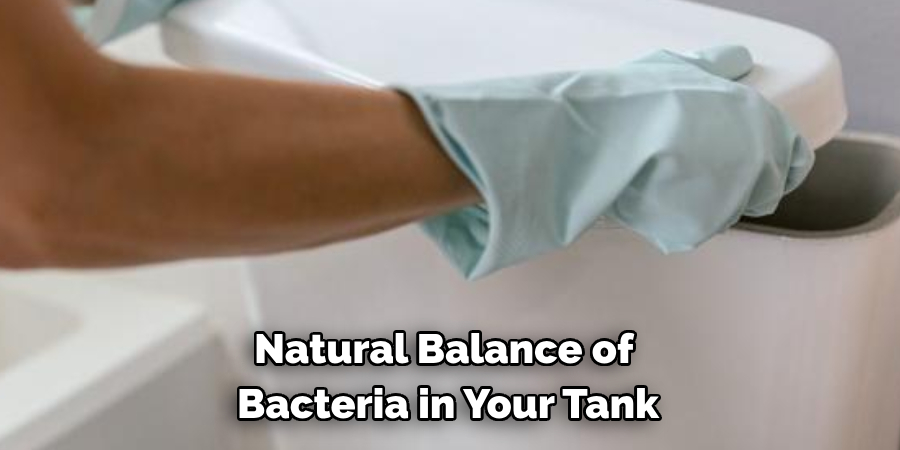
Additional Tips and Tricks to Use Drain Cleaner in Toilet
1. If you are concerned about the environmental impact of using drain cleaner, eco-friendly options are available. Look for products that contain natural ingredients like enzymes or bacteria to break down clogs without harsh chemicals.
2. To prevent future clogs, consider implementing good drain maintenance habits such as regularly flushing hot water and baking soda down the toilet. This can help keep your drains clear and avoid the need for harsh chemicals.
3. For stubborn clogs, you can try using a plunger before resorting to drain cleaner. Sometimes, a simple plunging motion can dislodge the clog and save you from using chemicals at all.
4. Always read and follow the instructions on the drain cleaner carefully. Using too much or leaving it in for too long can damage your pipes and cause more harm than good.
5. If you have a septic system, make sure to use a drain cleaner that is safe for septic tanks. Harsh chemicals can disrupt the natural balance of bacteria in your tank and cause problems.
6. Consider wearing protective gear like gloves and eye protection when using drain cleaner, as some products can harm skin and eyes. Keep the area well-ventilated to avoid breathing in fumes.

7. If you have a recurring clog, call a professional plumber instead of relying on a drain cleaner each time. They can inspect your pipes and determine the root cause of the clog, saving you time and money in the long run.
8. Remember to store drain cleaners that are out of reach for children and pets. Even eco-friendly products can be harmful if ingested, so always use caution when handling them.
9. If you have tried multiple times with drain cleaner and the clog persists, it may be time to call a professional plumber. They have specialized tools and techniques for removing tough clogs without damaging your pipes.
10. Lastly, always remember that prevention is the best solution for clogged drains. Avoid flushing items like wipes, paper towels, and feminine products down the toilet as they can easily cause clogs.
By following these additional tips and tricks, you can effectively use drain cleaner in your toilet while being mindful of the environment and your safety. Always be cautious and follow instructions carefully when using any type of drain cleaner. So, stay proactive in maintaining your drains to avoid the need for harsh chemicals in the future. Happy unclogging!
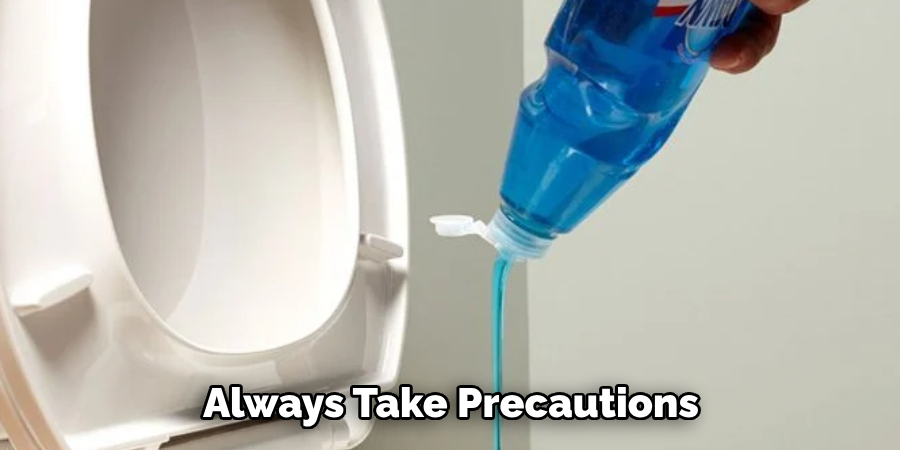
Things You Should Consider to Use Drain Cleaner in Toilet
1. The first thing to consider when using a drain cleaner in your toilet is the type of cleaner you choose. Different types of drain cleaners are available, such as chemical-based and natural options.
2. Chemical-based drain cleaners contain harsh chemicals that can damage your pipes and the environment. On the other hand, natural drain cleaners use enzymes or bacteria to break down clogs without causing harm.
3. Before using any drain cleaner, it is important to read the instructions carefully and follow them exactly. Improper use can lead to further clogging or damage to your pipes.
4. Wear gloves and eye protection When using a chemical-based drain cleaner. These cleaners can irritate the skin and cause burns if not handled properly.
5. It is also important to note that using a drain cleaner in your toilet may only sometimes be effective. If the clog is caused by non-organic materials such as plastic or toys, the drain cleaner may be unable to break it down.
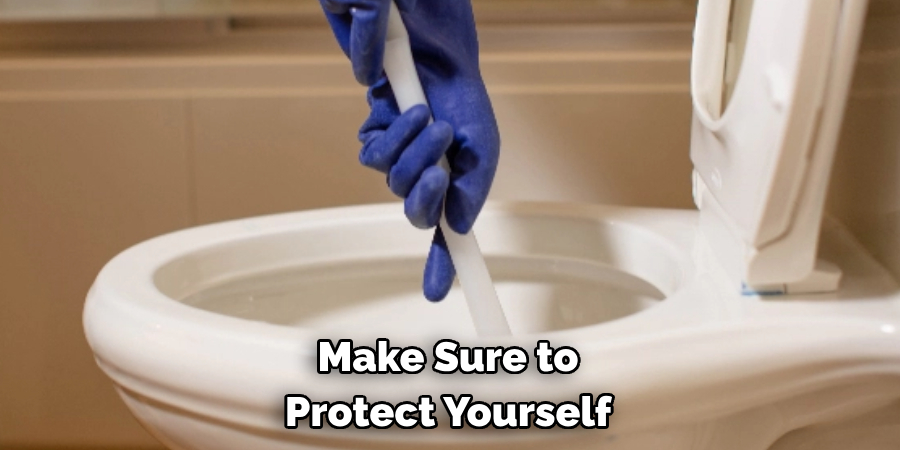
6. Also, some types of pipes, such as older metal pipes, may be more susceptible to damage from drain cleaners. Always check the label to ensure that the cleaner is safe for your specific type of pipes.
7. If you have a septic system, be cautious when using drain cleaners, as they can disrupt the natural balance of bacteria in your tank. Consider using natural options or consulting with a professional for advice on maintaining your septic system.
8. Before using a drain cleaner in your toilet, use a plunger or plumbing snake to remove the clog. These methods are often more effective and less damaging to your pipes.
9. If you have used a drain cleaner and the clog persists, do not continue using the product. This could indicate a larger issue with your plumbing, and it is best to consult with a professional plumber for assistance.
10. Lastly, it is important to properly dispose of any leftover drain cleaner. Do not pour it down the drain; it can harm your pipes and the environment. Instead, check with your local waste management department for proper disposal methods.
By considering these factors, you can safely and effectively use a drain cleaner in your toilet without causing harm to yourself or your plumbing system. Remember to always read the instructions and use caution when handling any type of drain cleaner. In some cases, it may be best to consult with a professional for clogs that are difficult to remove. Regular maintenance and proper use of drain cleaners can help keep your toilets and pipes clear and functioning properly. So, always be cautious while using any drain cleaner and follow the instructions carefully for the best results. Happy cleaning!
Troubleshooting Common Issues Encountered When Using Drain Cleaner in Toilets
1. Ineffective Drain Cleaner:
One of the most common issues people encounter when using drain cleaners in toilets is that they are ineffective in clearing the clog. This can be due to various reasons, such as using the wrong type of drain cleaner, not following the instructions properly, or using a drain cleaner that is not strong enough to dissolve the clog.
To avoid this issue, it is important to carefully read and follow the instructions provided by the manufacturer. Make sure you use a drain cleaner specifically designed for toilets and that it has enough power to dissolve the type of clog you are dealing with. If the first attempt does not clear the clog, do not continue using the drain cleaner, as it can cause damage to your pipes. Instead, try a different method or seek professional help.
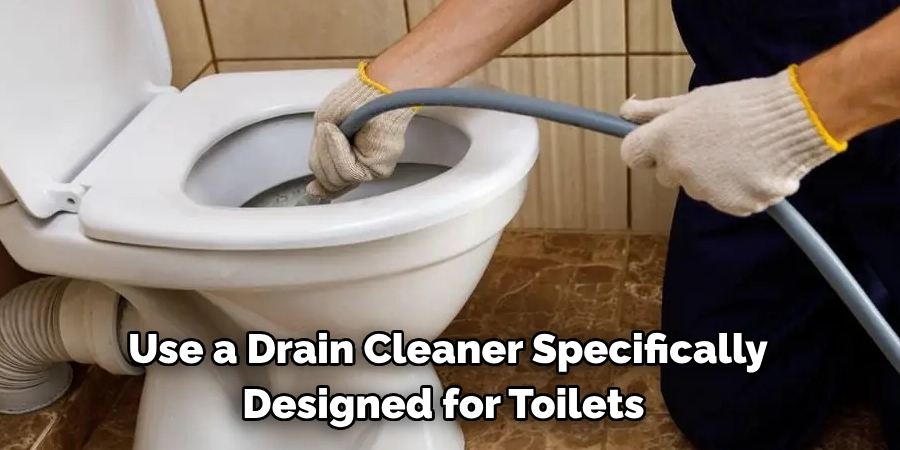
2. Damage to Pipes:
Another common issue with using drain cleaners in toilets is that they can cause damage to the pipes. This is especially true if the drain cleaner contains harsh chemicals such as sulfur or hydrochloric acid. These chemicals can corrode and weaken the pipes, leading to leaks or even complete pipe failure.
To avoid this issue, using drain cleaners that are safe for your plumbing system is important. Look for “safe for all pipes” products or natural alternatives such as baking soda and vinegar. It is also important to use a plunger or plumber’s snake before resorting to using a drain cleaner, as they can often clear the clog without harming your pipes.
3. Health Risks:
Many drain cleaners contain harsh chemicals that can harm your health if not handled properly. These chemicals can cause skin and eye irritation, respiratory problems, and, in some cases, even more serious health issues. It is important to always read and follow the safety instructions provided by the manufacturer when using drain cleaners.
To minimize the risk of exposure to these chemicals, drain cleaners should be handled in protective gear such as gloves, goggles, and a mask. The area should also be kept well-ventilated while drain cleaners are used. If you experience any adverse reactions while using drain cleaners, seek medical attention immediately.
4. Environmental Impact:
The chemicals in drain cleaners pose a threat not only to your health but also to the environment. When these chemicals are flushed down the toilet, they can end up in our waterways and harm aquatic life. If disposed of improperly, they can also contaminate groundwater and soil.
To reduce the environmental impact of using drain cleaners, consider using natural alternatives or opting for professional plumbing services. If you use a chemical drain cleaner, dispose of it properly according to the instructions on the label.
Following these troubleshooting tips can help you avoid common issues when using drain cleaners in toilets. Remember to always handle these products carefully and use them as a last resort, opting for more natural and eco-friendly methods whenever possible. If the problem persists, it is best to seek professional help from a plumber who can safely and effectively clear the clog without causing any damage to your pipes or health.
Precautions Need to Be Followed for Using Drain Cleaner in Toilet
1. First and foremost, always read the instructions carefully before using any drain cleaner. Different products may have different usage instructions and precautions, so make sure to follow them accordingly.
2. Wear protective gear, such as gloves and eye protection, when handling drain cleaners. These products contain strong chemicals that can cause skin irritation or even burns if they come into contact with your skin.
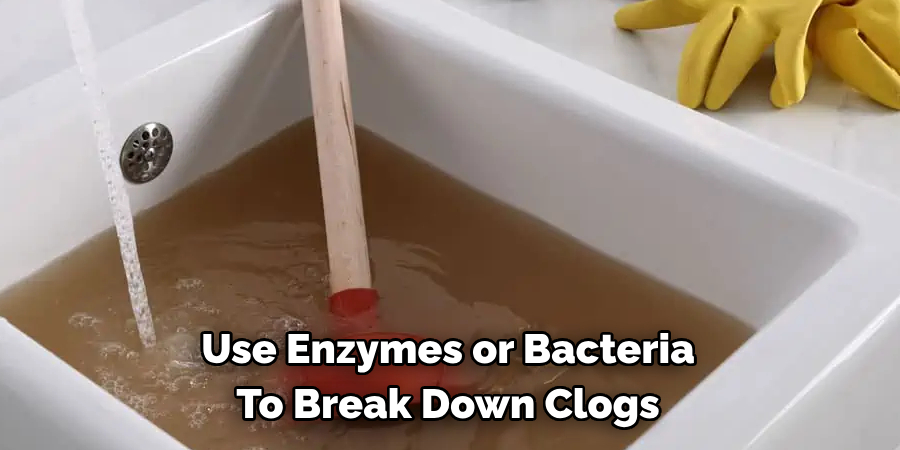
3. Make sure the bathroom is well-ventilated. Open windows or turn on a fan to allow fresh air in while using drain cleaner. This will help reduce the fumes and prevent any potential respiratory irritation.
4. Keep children and pets away from the area where you are using drain cleaner. The chemicals can be harmful if ingested or come into contact with their skin.
5. Never mix different types of drain cleaners together. This can create a dangerous chemical reaction that can release toxic fumes or even cause an explosion.
6. Avoid using too much drain cleaner at once. Follow the recommended usage amount on the product label and avoid overpouring, as this can damage your pipes or toilet bowl.
7. Remember to flush out the drain cleaner with water after the recommended amount of time has passed. This will help prevent any residual chemicals from lingering in your pipes or toilet.
8. If you use a plunger to help unclog the toilet, remove it before pouring in any drain cleaner. The plunger’s suction can cause the chemicals to splash back and potentially harm you.
9. Proper disposal of any leftover drain cleaner is also important. Do not pour it down the drain or toilet, as this can cause harm to your plumbing system and the environment. Instead, follow the instructions on the product label for proper disposal methods.
Following these precautions can help ensure your safety while using drain cleaner and prevent any potential damage to your toilet or plumbing system. Remember, it is always better to take the necessary precautions rather than risk harm to yourself or your home. Additionally, consider trying natural alternatives to chemical drain cleaners, such as a plunger or a mixture of baking soda and vinegar, which can be just as effective and safer for you and the environment. So next time you encounter a clogged toilet, be sure to use drain cleaner responsibly and carefully. Happy unclogging!
Conclusion
Now you know how to use drain cleaner in toilets and other plumbing fixtures without damaging them. Remember to always follow the instructions on the product label carefully and wear protective gear when handling harsh chemicals.
Drain cleaners can quickly fix clogged drains, but it is important to practice preventative measures to avoid future clogs. This includes regularly cleaning out hair and debris from drains, using drain filters to catch large particles, and avoiding pouring grease and oil down drains. So, while drain cleaners can be helpful, it is best to use them sparingly and as a last resort.

